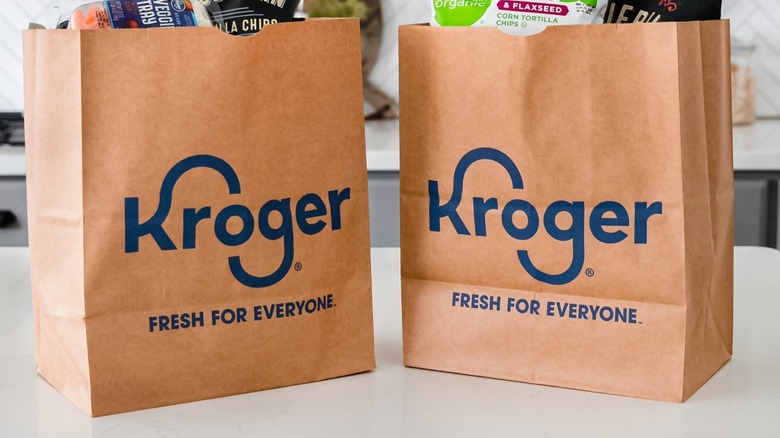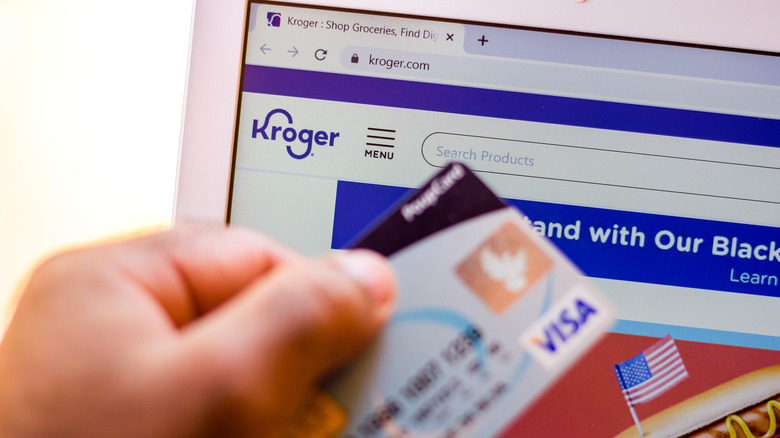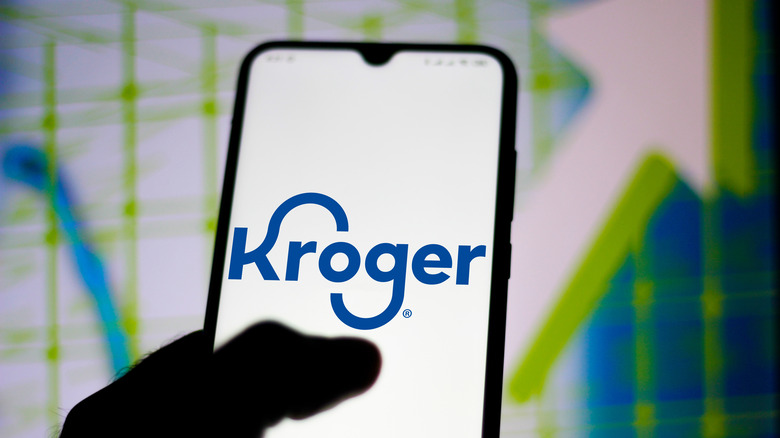How Kroger Is Using Tech To Stay On Top Of Its Game
When COVID-19 first struck in late spring of 2020, traditional supply chains that served everything from household cleaning supplies to dairy, meats, and cereals were left struggling in its wake. The pandemic's impact, and the fallout, were such that FMI: The Food Industry Association executive director David Fikes said, "Never before in the recent past of our nation have we been forced to confront the magnitude of abrupt changes that COVID-19 circumstances foisted upon us all," per Supermarket News. He continued, "So the food industry — an industry that over the past few decades has become quite accustomed to confronting and addressing disruptions — suddenly found itself facing an unprecedented disruption."
Disruption came in the form of shifting consumer preferences mirrored in a survey conducted in June that same year, just months after the pandemic hit. Thanks to COVID-19, Supermarket News reports that the industry saw big changes in the way shoppers bought their necessities with "78% of shoppers surveyed saying they made a change in where they shop for food; 40% shopped at fewer stores, and 28% shop more online. Also, 15% said they avoid stores they typically shop, 11% changed the store they shop most often, 10% shop at different types of stores, and another 10% have stopped going to stores."
That change was quick and unexpected; so much so that Kroger CEO Rodney McMullen told Axios that the industry had seen a shift that it had originally expected to take place over three years happen over two weeks instead.
Kroger used the pandemic to fine tune its e-commerce offer
Like other groceries, Kroger reported astronomical sales figures. The grocery store pulled in sales of $132.5 billion during the first pandemic year. During an earnings call, Rodney McMullen explained that chain had benefitted from pandemic-driven changes to consumer habits. McMullen explained, per Dayton Daily News, "We continue to see people eat and work more from home and prioritize health and cleanliness. We believe that these trends will continue even as restrictions ease and vaccinations are distributed."
And because people were sheltering at home to avoid getting sick, the company said it was seeing a greater number of customers interacting with what McMullen described as Kroger's "seamless ecosystem."
"When customers engage in both our in-store and online modalities," McMullen said, "we see a 98% retention rate within our ecosystem, highlighting how sticky our customer engagement is."As a result, Kroger reached $132.5 billion in sales in 2020 in comparison to the previous year in which they maxed out at $122.3 billion.
Kroger's digital expansion could overshadow its deal with Instacart
Kroger's tech focus appeared to stem from its "Restock Kroger" program that the grocery chain had launched before the pandemic, and which saw it working with Microsoft to build up a digital infrastructure that could support both e-commerce and delivery, per The Motley Fool.
Leaning into tech appears to be paying off for the grocery giant. In mid-May 2022, other grocery retailers like Walmart and Target reported balance sheets which fell below what investors and analysts were looking for and which, in turn, triggered a sell-off that caused markets to buckle per Investor's Business Daily. But for the same period, Kroger reported sales and flew above the levels investors and analysts had expected to see, which helped give its stock price a boost.
Reuters credits Kroger's tech strategy for its ability to stay on top of its game. That includes a thriving online business inclusive, Reuters says, of "loyalty programs to memberships for unlimited home deliveries, while also opening automated fulfillment centers across the United States to support online orders through its partnership with British online supermarket Ocado Group."
McMullen has good reason to push loyal customers to stay online. He noted, "When a customer engages with us digitally, they spend more with Kroger."


